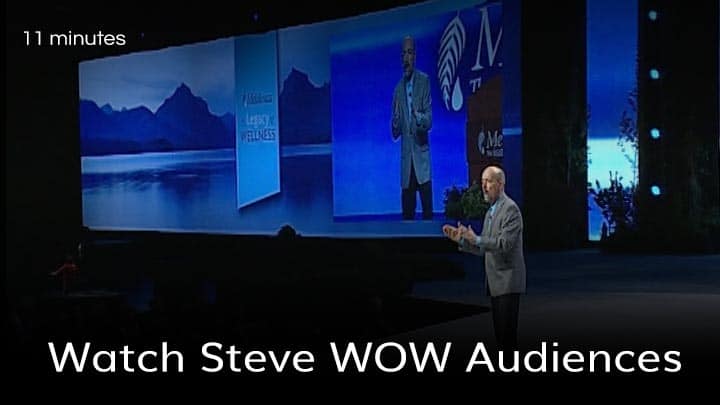Blog
Communication in the Workplace
Communication in the Workplace: The Missing Link Between Strategy and Success
Let’s talk communication in the workplace. Here’s a startling fact: most organizations don’t have a strategy problem. They have a communication problem.
I’ve worked with Fortune 500 companies, the CIA, American Express, and Marriott Hotels, and I’ve watched brilliant strategies fail not because the ideas weren’t sound, but because the message never landed. Teams misunderstood priorities. Leaders thought they’d communicated clearly when their teams heard something completely different. Silos formed. Resentment built. And talented people walked out the door confused about what was actually expected of them.
The disconnect between what gets planned in the boardroom and what gets executed on the front lines almost always traces back to one root cause: communication in the workplace broke down.
Why Communication in the Workplace Matters More Than Ever
We live in an era of constant connection—Slack messages, emails, video calls, text alerts. And yet, genuine communication is rarer than ever. People are busier. Attention spans are fractured. And many leaders still operate under the assumption that information shared once equals information understood.
It doesn’t.
Effective communication in the workplace isn’t about sending more messages. It’s about creating clarity, building alignment, and ensuring that what’s in your head makes it into someone else’s head in a way that actually drives action.
When communication works, everything changes. Employees understand their role in the bigger picture. Teams move together instead of working at cross-purposes. Innovation happens because people feel empowered to contribute ideas. And retention improves because people feel valued and understood.
When communication fails, nothing works—no matter how solid your strategy is.
Communication in the Workplace: The Hidden Cost of Poor Communication
Let’s talk dollars and cents. Research consistently shows that organizations with poor communication experience significantly higher turnover, lower engagement, and decreased productivity. But those are just the obvious costs.
Poor communication creates confusion. When people don’t understand expectations, they either over-deliver (burning themselves out) or under-deliver (and get frustrated). It creates inefficiency. Teams repeat work, make decisions based on incomplete information, and waste energy in misalignment. It breeds resentment. When people feel unheard or misunderstood, they disengage. And worst of all, it kills innovation because people stop speaking up if they’ve learned that their input doesn’t matter or gets lost in translation.
I worked with a tech company where the executive team had a brilliant transformation plan. They thought they’d communicated it perfectly. Six months later, frontline managers had no idea what the vision actually was. The company had spent millions on the strategy and gotten 10% of the expected results—not because the strategy was flawed, but because the message never landed.
Communication in the Workplace: The Real Elements of Effective Workplace Communication
What does good communication actually look like? It’s clear, intentional, consistent and two-way.
Clarity comes first. Say what you mean in language your audience actually speaks. Not corporate jargon. Not abstractions. Specifics. “We’re shifting our customer focus to enterprise accounts” means something. “We’re going to optimize our vertical positioning” means nothing. If you can’t explain it simply, you don’t understand it well enough yet.
Consistency matters enormously. One message sent once doesn’t stick. The research on retention says people need to hear something seven times before it really lands. That’s not repetition for its own sake—it’s reinforcement through different channels, different messengers, different contexts. Your message gets stronger when it’s echoed from multiple directions.
Context makes it real. People need to understand not just what you’re asking them to do, but why it matters. How does this change connect to the company’s mission? How does it affect their role? What’s in it for them? When people understand the “why,” they’re not just following orders—they’re choosing to contribute to something that matters.
Listening completes the circle. The best communicators aren’t the best talkers. They’re the best listeners. When was the last time you asked your team what they understood about a message? What barriers they see? What concerns they have? Two-way communication builds buy-in and surfaces critical information leadership needs to hear.
Psychological safety enables honesty. People will only communicate openly if they believe it’s safe to do so. If mistakes get punished harshly, people hide problems until they explode. If different opinions get shot down, you only hear agreement. Create an environment where people can speak truthfully—about challenges, concerns, even dissent—and watch communication transform.
Communication in the Workplace: Communication Across Different Workplace Dynamics
One-size-fits-all communication doesn’t work anymore. Your workforce is diverse—different ages, different roles, different communication preferences.
Some people process written communication best. Others need to hear it verbally. Some need the big-picture context first; others want the specific tasks. Remote team members experience communication differently than people in the office. New employees need different communication in the workplace than tenured staff.
The best communicators I’ve worked with adapt their approach. They recognize that getting the message to land means meeting people where they are, not expecting everyone to understand in the same way.
And here’s something critical: what you don’t communicate matters as much as what you do. Silence gets interpreted. Absence of information creates a vacuum that gets filled with speculation, rumor, and anxiety. Leaders who disappear during uncertain times trigger fear. Leaders who communicate consistently—even just to say “we don’t have all the answers yet, but here’s what we’re doing”—build trust.
Practical Steps to Transform Communication in Your Organization
Start with intention. Before you communicate anything, ask yourself: What do I want people to understand? What action do I want them to take? What’s the most important point? Too many leaders wing it, and it shows.
Choose the right channel. Not everything belongs in an email. Complex strategy needs conversation. Appreciation should be personal. Crisis communication needs immediacy. Match the message to the medium.
Make it consistent and multi-channel. Share the same core message in team meetings, one-on-ones, written updates, and informal conversations. Different people absorb information differently. Give them multiple ways to receive and process it.
Ask questions and listen. After you communicate something significant, ask people what they heard. Not in a gotcha way—genuinely trying to understand if your message landed. Listen to what concerns come up. Adjust accordingly.
Create feedback loops. Set up systems where information flows back up as well as down. Anonymous surveys, suggestion boxes, regular listening sessions—give people safe ways to communicate back to leadership.
Model the communication you want to see. If you want honesty, be honest about what you don’t know. As far as clarity, be clear in your own messages. Want people to listen? Listen to them. Your team mirrors your communication style.
Celebrate good communication. When someone communicates clearly, acknowledge it. When a team works through conflict with honest dialogue, call it out. What you reward gets repeated.
The Mindset Shift That Changes Everything
Here’s what I know after working with leaders across industries: communication in the workplace isn’t a soft skill that’s nice to have. It’s the infrastructure that makes everything else possible.
Your strategy is only as good as your organization’s ability to understand and execute it. The culture is determined by how honestly people can communicate with each other. Innovation happens when people feel heard and empowered to contribute ideas. Your retention depends on people feeling valued and understood.
The leaders winning right now aren’t the smartest people in the room. They’re the ones who can take complex ideas and make them crystal clear, and listen as much as they talk. The ones who recognize that in a world of constant noise, real communication is rare and powerful.
This requires a mindset shift. It means accepting that communication isn’t a task to check off. It’s an ongoing practice. It’s about being willing to repeat yourself and creating space for dialogue, not just delivery. Are you caring enough about your message to make sure it actually lands?
Communication in the Workplace: The Bottom Line
Your organization’s success hinges on communication. Not just occasionally. Not just in big moments. Consistently, authentically, and two-directionally.
When communication works, people understand where they’re going. Teams move together. Innovation happens. People stay because they feel valued and in the loop. Strategy becomes reality instead of a plan that fails in execution.
The question isn’t whether you have time to invest in better communication. It’s whether you can afford not to. Because right now, what’s really happening in your organization? Is your team energized and aligned, or confused and siloed?
That answer tells you everything about your communication.
Steve Rizzo is a Hall of Fame motivational speaker and “Attitude Adjuster” who helps organizations transform their culture through better mindset and communication. His keynotes and workshops have impacted Fortune 500 companies, including the CIA, American Express, and Marriott Hotels. He’s the author of Get Your Shift Together and believes that mindset is everything.


